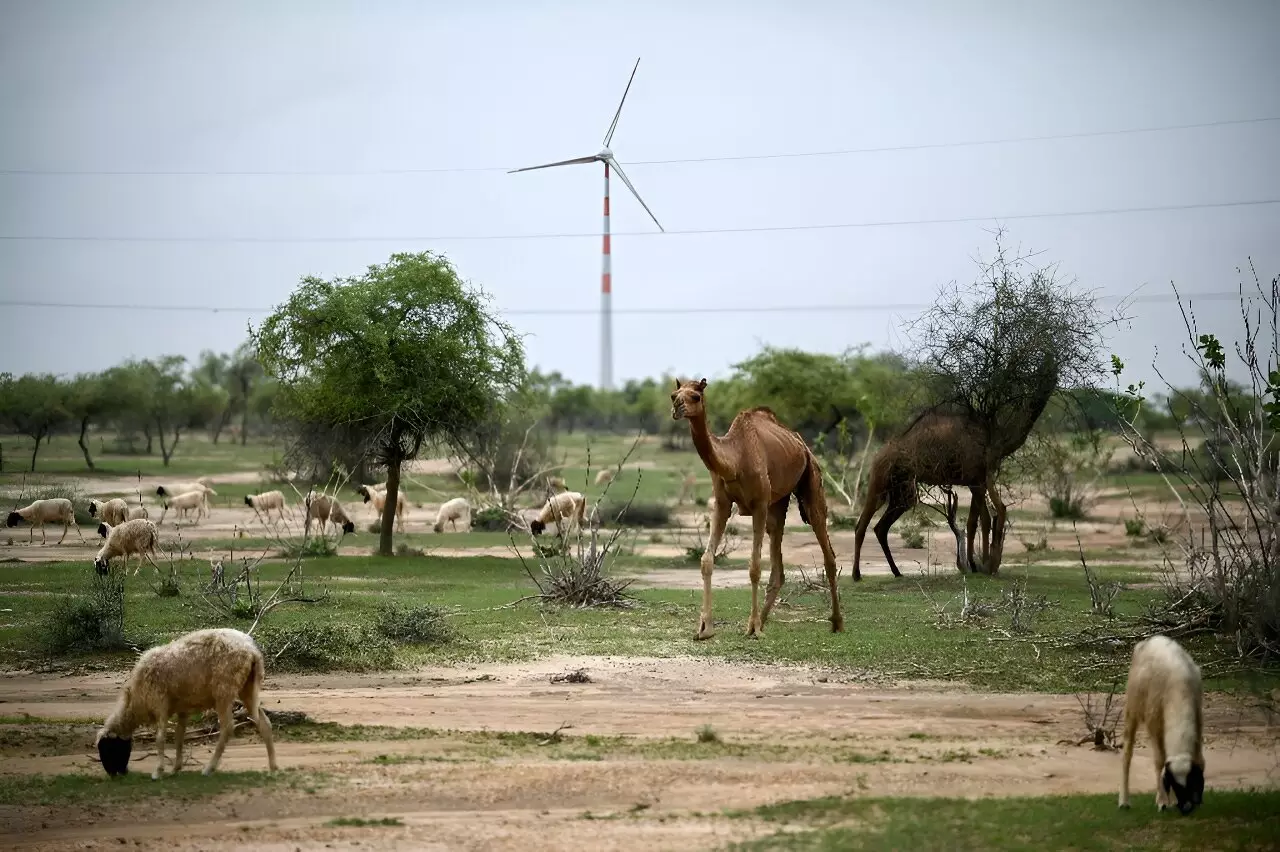India’s Thar desert is home to sprawling wind farms that contribute critical green energy to the nation. However, the local communities living in the shadow of these towering turbines bear the brunt of this renewable energy production. The clash between the need for clean energy and the impact on traditional ways of life highlights the difficult balance faced by India as it strives to address climate change. Livestock herders like Nena Ram express their frustration at the disruption caused to their age-old farming practices by the construction of windmills.
The construction of wind turbines in western Rajasthan state has led to the loss of grazing lands and damage to sacred groves critical for the local economy. The environmental consequences of renewable energy production in the desert region include damage to water sources, reduced grasslands, and further desertification. While these initiatives aim to reduce greenhouse gas emissions, they also impose unintended hardships on the communities that rely on the land for their livelihoods.
Companies like the Adani Group and Suzlon, which own many of the wind turbines in Rajasthan, claim to support community development projects in the areas where they operate. However, local farmers lament the loss of grazing lands and reduced milk production due to the encroachment of wind farms on communal lands. The conflict between the need for renewable energy and the preservation of traditional ways of life raises questions about the costs of development on local communities.
Despite the increase in renewable energy capacity, many rural areas like Jaisalmer district face frequent power cuts and inadequate electricity supply. The disparity between urban energy consumption and rural deprivation underscores the challenges of ensuring energy access for all while transitioning to cleaner power sources. Environmental activists raise concerns about the impact of power lines and wind turbines on local biodiversity, including endangered species like the Great Indian Bustard.
India’s ambitious targets for renewable energy expansion by 2030 and achieving net-zero emissions by 2070 necessitate large-scale infrastructure development. However, the conflict between conservation efforts and renewable energy goals highlights the complexities of environmental policy. The Supreme Court’s order to put power lines underground in bird breeding zones underscores the tension between conservation and renewable energy targets.
As India navigates the transition to a greener economy, it must address the social and environmental challenges posed by renewable energy production in sensitive ecosystems like the Thar desert. Balancing the need for clean energy with the preservation of biodiversity and local livelihoods requires a nuanced approach that prioritizes environmental justice and sustainable development. The clash between progress and conservation in India’s quest for renewable energy underscores the broader global challenge of addressing climate change while protecting vulnerable communities and ecosystems.


Leave a Reply